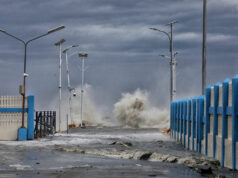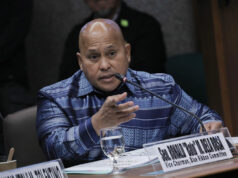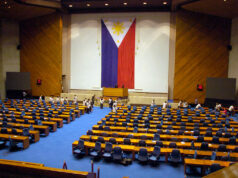Diokno says banks have enough buffers vs risks

BANGKO SENTRAL ng Pilipinas (BSP) Governor Benjamin E. Diokno downplayed analysts’ expectations of a possible rise in nonperforming loans (NPLs) and slower credit growth due to the coronavirus disease 2019 (COVID-19) outbreak, saying local banks are “adequately capitalized” to withstand such risks.
“The fear that Philippine banks will experience bad loans and slower credit growth on account of COVID-19 outbreak is unfounded,” Mr. Diokno said in a text message on Monday.
“They have capital adequacy ratio (CAR) much higher than BSP-prescribed 10% and Bank of International Settlements-prescribed eight percent,” he added.
S&P Global Ratings said in a report on Monday that 2020 could be another year of easing loan growth and higher bad loans for local banks, with COVID-19 seen hampering economic growth and financial markets.
The credit rater, however, noted that Philippine banks are seen weathering the outbreak’s impact and be resilient due to their strong fundamentals.
“We expect trade and private investments to slow in Philippines due to the global coronavirus outbreak, and this will drag on banks’ lending business,” S&P Global Ratings credit analyst Nikita Anand said.
S&P said local banks’ bad loans increased by 30 basis points (bps) to comprise 2.1% of outstanding loans in 2019, partly due to the default of Hanjin Heavy Industries and Construction Philippines, Inc.
“NPLs are likely to inch up further in 2020 due to macroeconomic headwinds,” S&P said, but noted that lenders’ “good capital buffers,” with an industry average Tier 1 CAR of about 14%, seen to support banks amid a prolonged outbreak.
With the virus outbreak taking a toll on industries like travel, hospitality, restaurants, entertainment, and trade in the near term, banks with larger exposures to such sectors are expected to feel the impact.
“The banking sector’s exposure to hotels and catering is about 2% while wholesale and retail trade is 12%. This is meaningful exposure and could translate to higher delinquencies,” S&P’s Ms. Anand said.
“Banks may offer moratoriums on repayments for badly hit sectors if the health situation escalates, similar to in Singapore and Thailand,” she added.
Aside from a possible increase in bad loans, S&P also said credit growth could be softer than initially expected, with the expansion in 2019 already slowing to 8.8% from 15% in 2018.
“We expect credit growth of 8%-10% in 2020, down from previous forecast of 10%-12%. This means the country’s banks could see a second year of single-digit growth after a long run of double-digit expansions in previous years,” S&P said.
The global debt watcher said COVID-19 could dent corporate loan demand and dampen the growth seen in the retail segment.
“In our view, the impact of COVID-19 could drag on demand for corporate loans — which make up 82% of banking system’s loans — and stifle momentum in the retail segment. Last year, retail loans were a key growth driver, expanding 16% year-on-year,” it said.
S&P on Friday cut its growth outlook for the country to 5.8%, a further downgrade from the 6.1% it gave in February.
The economy grew by 5.9% in 2019, below the official 6-6.5% target. The government targets 6.5-7.5% economic growth this year.
Socioeconomic Planning Secretary Ernesto M. Pernia last week said gross domestic product (GDP) growth could be reduced by one percentage point this year based on a scenario where inbound Chinese tourist will be cut by 100%, foreign tourist arrivals will be shaved by 10%, and with trade that could be “drastically reduced.”
Confirmed cases in the Philippines rose to 20 as of Monday with local transmission already recorded. President Rodrigo R. Duterte on Sunday signed Proclamation 922, putting the country under a state of public health emergency.
COVID-19 has already infected over 1,000 people across the globe and killed over 3,500. — Luz Wendy T. Noble



